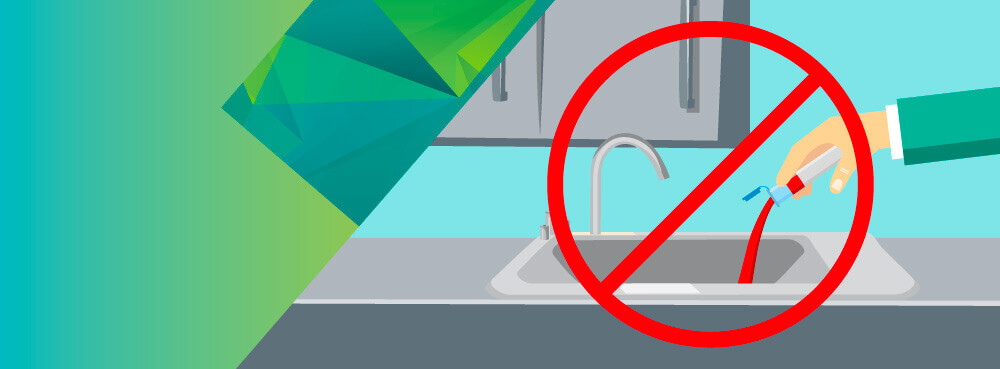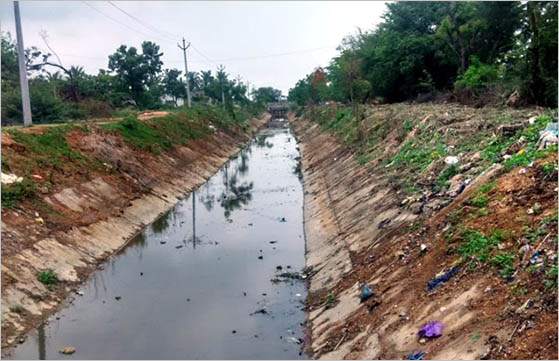Reputable Liquid Waste Disposal Melbourne: Safe and Efficient Providers
Reputable Liquid Waste Disposal Melbourne: Safe and Efficient Providers
Blog Article
Exactly How Fluid Waste Disposal Works: A Detailed Overview of Methods and Technologies Utilized

Introduction of Liquid Waste Kind
The complexity of fluid waste types requires a thorough understanding of their qualities and effects for disposal. Fluid waste can generally be categorized right into a number of kinds, consisting of commercial, local, agricultural, and harmful waste. Each group displays unique properties, needing details administration approaches to reduce ecological and health dangers.
Industrial fluid waste originates from manufacturing procedures and often consists of a series of contaminants, such as heavy steels, solvents, and organic compounds. Local fluid waste, primarily comprising wastewater from households and commercial facilities, consists of natural matter, nutrients, and virus (industrial wastewater treatment). Agricultural fluid waste, including runoff from ranches, might include fertilizers, pesticides, and animal waste, posing dangers to water top quality and ecosystems
Hazardous liquid waste is defined by its poisoning, reactivity, or prospective to cause damage. This group consists of compounds like acids, bases, and specific chemicals that necessitate stringent handling and disposal methods. Recognizing these varied fluid waste types is vital for developing reliable disposal methods and ensuring conformity with ecological regulations. Proper classification and characterization are necessary for implementing appropriate treatment techniques and minimizing the damaging influences on public health and wellness and the atmosphere.
Physical Treatment Methods

Testing is the initial action, where bigger fragments and particles are gotten rid of from the liquid waste using displays or grates. In sedimentation containers, much heavier fragments resolve at the bottom, creating a sludge layer, while the made clear liquid can be more treated.
Filtration is an additional necessary approach that entails passing the fluid via porous materials, such as sand or membrane layers, to record smaller sized particles. This step improves the top quality of the fluid, making it ideal for succeeding treatment procedures.

Chemical Treatment Methods
Chemical treatment methods are vital for successfully managing liquid waste, especially in resolving dissolved and colloidal pollutants that physical methods may not properly eliminate. These methods use numerous chemical representatives to neutralize, speed up, or transform dangerous compounds into less harmful forms.
One common method is coagulation and flocculation, where chemicals such as alum or ferric chloride are contributed to advertise the aggregation of suspended fragments. This procedure enhances sedimentation, permitting much easier removal of the resulting sludge. Furthermore, oxidation processes, utilizing representatives like chlorine or ozone, are used to damage down intricate natural compounds and microorganisms, rendering the waste more secure for discharge or more therapy.
Neutralization is another important strategy, which changes the pH of acidic or alkaline waste streams to neutral degrees, preventing possible injury to downstream systems and the environment. Furthermore, progressed oxidation procedures (AOPs) make use of mixes of oxidants and ultraviolet light to break down persistent toxins, accomplishing a greater degree of treatment performance.
Organic Therapy Procedures
Biological therapy processes play an essential duty in the administration of liquid waste by using bacteria to disintegrate organic matter and decrease contaminant levels. These procedures can be extensively categorized right into cardiovascular and anaerobic treatments, each using certain microbial communities to achieve efficient Bonuses waste deterioration.
Cardio therapy entails using oxygen to help with the failure of natural products by germs. This process is frequently executed in activated sludge systems, where oygenation containers offer a helpful setting for microbial growth, resulting in the oxidation of organic contaminants. The resultant biomass can be divided from dealt with effluent via sedimentation.
On the other hand, anaerobic treatment takes place in the lack of oxygen, depending on different germs to damage down natural issue. This method is particularly beneficial for high-strength waste, as it creates biogas, a sustainable power source, while reducing sludge manufacturing. Technologies such as anaerobic digesters are regularly utilized in commercial and municipal applications.
Both anaerobic and cardio organic treatments not only decrease the ecological influence of liquid waste however also facilitate resource recuperation, making them vital components of sustainable waste management approaches. Their flexibility, performance, and efficiency support their prevalent implementation throughout numerous fields.
Arising Technologies in Disposal
Innovative strategies to liquid waste disposal are quickly progressing, driven by improvements in innovation and an increasing focus on sustainability. Amongst these emerging technologies, membrane layer bioreactors (MBRs) have gotten traction for their capability to integrate organic treatment with membrane filtering, leading to top notch effluent that can be recycled in numerous applications. MBRs enable smaller impacts and much more effective operations compared to typical systems.
One more appealing development is making use of anaerobic important site food digestion combined with nutrient recuperation technologies, which not just deals with liquid waste but additionally produces biogas and recovers important nutrients like nitrogen and phosphorus. This dual benefit improves resource effectiveness and decreases ecological impact.
In addition, progressed oxidation procedures (AOPs) are being adopted for the destruction of complex organic toxins. These approaches utilize effective oxidants and stimulants to damage down pollutants at the molecular degree, providing an extremely efficient remedy for challenging waste streams.
Additionally, the integration of expert system and artificial intelligence in waste administration systems is optimizing functional efficiency and anticipating maintenance, resulting in minimized costs and boosted environmental conformity. These innovations mirror a significant shift in the direction of more efficient and lasting fluid garbage disposal methods.
Verdict
In verdict, efficient fluid waste disposal demands a thorough understanding of numerous methods and innovations. By constantly advancing these approaches, it ends up being possible to resolve the expanding challenges connected with fluid waste, inevitably contributing to environmental defense and source healing.
Liquid waste disposal is an essential aspect of ecological administration, calling for an extensive understanding of various methods and modern technologies tailored to different waste types. Fluid waste read this article can generally be categorized right into several types, consisting of commercial, community, agricultural, and dangerous waste. Agricultural fluid waste, including drainage from farms, might contain fertilizers, pesticides, and animal waste, presenting dangers to water quality and ecological communities.
Different physical treatment methods play a vital function in handling fluid waste effectively - industrial wastewater treatment.In conclusion, effective fluid waste disposal demands a thorough understanding of different techniques and innovations
Report this page